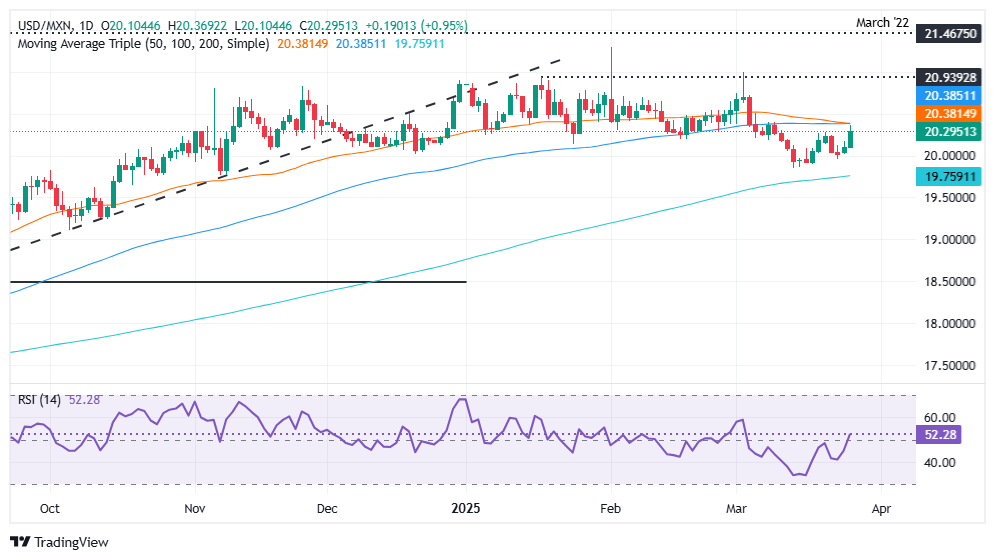On Thursday, the Banco de México (Banxico) reduced its interest rate by 50 basis points, from 9.50% to 9%, and opened the door for additional adjustments to calibrate monetary policy and make similar adjustments.
The statement highlighted that the disinflation process is evolving, opening the door to a continued easing of monetary policy. Banxico’s board expects inflation to reach its 3% target by Q4 2026.
Key takeaways:
Board estimates that looking forward it could continue calibrating the monetary policy stance and consider adjusting it in similar magnitudes
Balance of risks for the trajectory of inflation within the forecast horizon is biased to the upside
Board anticipates that the inflationary environment will allow to continue the rate cutting cycle, albeit maintaining a restrictive stance
Changes in economic policy by the new US administration have added uncertainty to the forecasts
Effects could imply inflationary pressures on both sides of the balance
Disinflation process remains well on track
The environment of uncertainty and trade tensions poses significant downward risks
USD/MXN reaction to Banxico's decision
The USD/MXN rose to test the 50 and 100-day Simple Moving Averages (SMAs) near 20.35/36.
Banxico FAQs
The Bank of Mexico, also known as Banxico, is the country’s central bank. Its mission is to preserve the value of Mexico’s currency, the Mexican Peso (MXN), and to set the monetary policy. To this end, its main objective is to maintain low and stable inflation within target levels – at or close to its target of 3%, the midpoint in a tolerance band of between 2% and 4%.
The main tool of the Banxico to guide monetary policy is by setting interest rates. When inflation is above target, the bank will attempt to tame it by raising rates, making it more expensive for households and businesses to borrow money and thus cooling the economy. Higher interest rates are generally positive for the Mexican Peso (MXN) as they lead to higher yields, making the country a more attractive place for investors. On the contrary, lower interest rates tend to weaken MXN. The rate differential with the USD, or how the Banxico is expected to set interest rates compared with the US Federal Reserve (Fed), is a key factor.
Banxico meets eight times a year, and its monetary policy is greatly influenced by decisions of the US Federal Reserve (Fed). Therefore, the central bank’s decision-making committee usually gathers a week after the Fed. In doing so, Banxico reacts and sometimes anticipates monetary policy measures set by the Federal Reserve. For example, after the Covid-19 pandemic, before the Fed raised rates, Banxico did it first in an attempt to diminish the chances of a substantial depreciation of the Mexican Peso (MXN) and to prevent capital outflows that could destabilize the country.
Information on these pages contains forward-looking statements that involve risks and uncertainties. Markets and instruments profiled on this page are for informational purposes only and should not in any way come across as a recommendation to buy or sell in these assets. You should do your own thorough research before making any investment decisions. FXStreet does not in any way guarantee that this information is free from mistakes, errors, or material misstatements. It also does not guarantee that this information is of a timely nature. Investing in Open Markets involves a great deal of risk, including the loss of all or a portion of your investment, as well as emotional distress. All risks, losses and costs associated with investing, including total loss of principal, are your responsibility. The views and opinions expressed in this article are those of the authors and do not necessarily reflect the official policy or position of FXStreet nor its advertisers. The author will not be held responsible for information that is found at the end of links posted on this page.
If not otherwise explicitly mentioned in the body of the article, at the time of writing, the author has no position in any stock mentioned in this article and no business relationship with any company mentioned. The author has not received compensation for writing this article, other than from FXStreet.
FXStreet and the author do not provide personalized recommendations. The author makes no representations as to the accuracy, completeness, or suitability of this information. FXStreet and the author will not be liable for any errors, omissions or any losses, injuries or damages arising from this information and its display or use. Errors and omissions excepted.
The author and FXStreet are not registered investment advisors and nothing in this article is intended to be investment advice.
Recommended content
Editors’ Picks

EUR/USD turns lower to near 1.0800 ahead of German inflation data
EUR/USD has come under fresh selling and trades near 1.0800 in European trading on Monday. The pair feels the heat from a modest US Dollar comeback while Euro buyers stay cautious ahead of Germany's prelim inflation data and Trump's reciprocal tariff announcement.

Gold sits at record highs above $3,100 amid tariff woes
Gold price holds its record-setting rally toward $3,150 in European trading on Monday. The bullion continues to capitalize on safe-haven flows amid intesifying global tariff war fears. US economic concerns weigh on the US Dollar and Treasury yields, aiding the Gold price upsurge.

GBP/USD holds lower ground below 1.2950 amid tariff woes
GBP/USD has returned to negative territory in the European session on Monday. Concerns that US President Donald Trump's tariffs will ignite inflation and dampen economic growth have helped revive the havem demand for the US Dollar, weighing down on the pair.

Seven Fundamentals for the Week: “Liberation Day” tariffs and Nonfarm Payrolls to rock markets Premium
United States President Donald Trump is set to announce tariffs in the middle of the week; but reports, rumors, and counter-measures will likely dominate the headline. It is also a busy week on the economic data front, with a full buildup to the Nonfarm Payrolls (NFP) data for March.

US: Trump's 'Liberation day' – What to expect?
Trump has so far enacted tariff changes that have lifted the trade-weighted average tariff rate on all US imports by around 5.5-6.0%-points. While re-rerouting of trade will decrease the effectiveness of tariffs over time, the current level is already close to the highest since the second world war.

The Best brokers to trade EUR/USD
SPONSORED Discover the top brokers for trading EUR/USD in 2025. Our list features brokers with competitive spreads, fast execution, and powerful platforms. Whether you're a beginner or an expert, find the right partner to navigate the dynamic Forex market.


